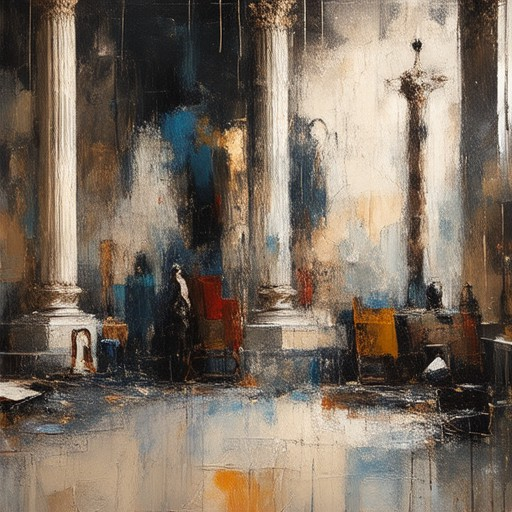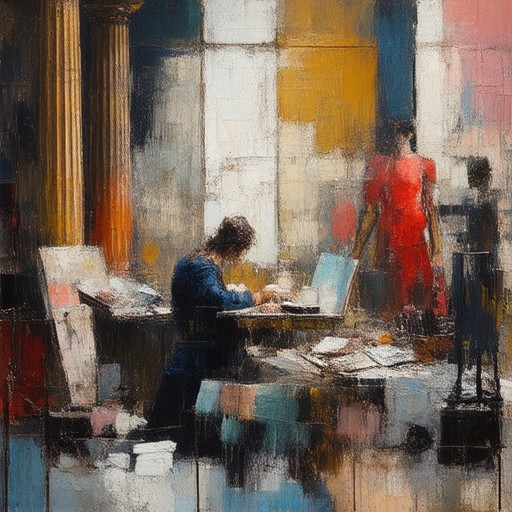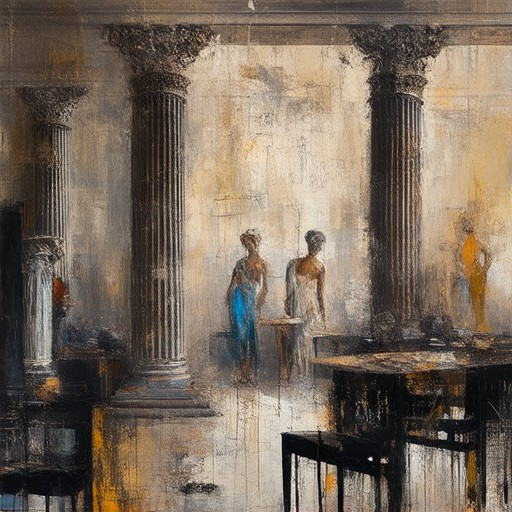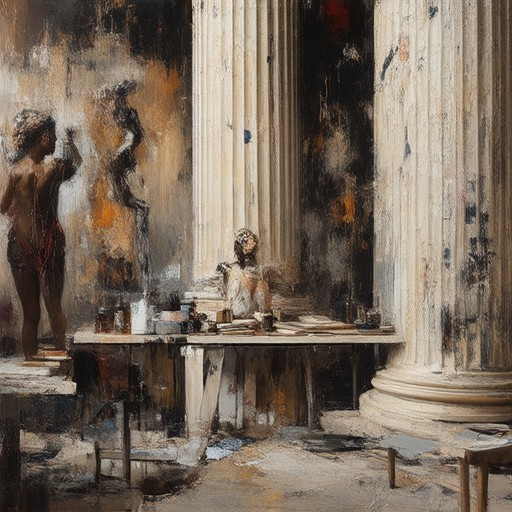Exploring painting styles is a journey that invites curiosity, creativity, and a desire to uncover the endless possibilities within the art world. Whether you’re a seasoned artist or someone just beginning to dip their brush into the water, the realm of painting styles offers a vast tapestry of techniques, mediums, and cultural influences that span centuries. From the classical mastery of traditional oil painting to the bold experimentation of modern art movements, there’s no shortage of styles to inspire and challenge your creative spirit. This comprehensive guide will walk you through the ins and outs of exploring painting styles, offering insights into how different techniques and mediums have shaped the art landscape over time. Prepare to embark on a visual adventure that celebrates the beauty of art in all its forms.
Key Takeaways
– Master Scenic Painting Techniques to Elevate Your Work: Learn advanced methods like layering, glazing, and impressionistic brushwork to create depth and atmosphere in your scenes.
– Explore the Versatility of Scenic Design Across Theatre, Film, and Visual Media: Understand how scenic design enhances storytelling and immerses audiences in diverse narratives.
– Discover the Four Classical Painting Modes That Defined Art History: Study sfumato, chiaroscuro, cangiante, and unione to master realistic representation and contribute to future artistic movements.
– Enhance Your Palette with Color Theory and Value Shifting: Use complementary and analogous colors, along with value manipulation, to guide the viewer’s eye and create visually stunning compositions.
– Add Texture and Dimension with Innovative Techniques: Experiment with stippling, pointillism, and rag-rolling to introduce unique textures and depth to your artwork.

Discovering Your Painting Style
Your painting style is a unique expression of your creativity, influenced by your personality, experiences, and artistic preferences. To uncover yours, consider the following steps:
- Experiment with Mediums: Try different painting mediums like watercolor, acrylic, or oil to see which suits your technique and comfort level.
- Explore Themes: Determine if you prefer landscapes, portraits, abstract art, or still lifes. Consider subject matter that resonates with you personally.
- Study Influences: Look at works of artists you admire, such as Van Gogh or Klimt, to gain insight into their techniques and styles, but remain true to your own vision.
- Practice Regularly: Dedicate time to painting daily, even if just for short periods, to develop your skills and style continuously.
- Document Your Progress: Keep a sketchbook or journal to track your evolution and observe changes in your approach over time.
- Engage with Communities: Join art classes, workshops, or online forums to receive feedback and learn from others’ perspectives and techniques.
- Analyze Your Work: Review your completed pieces to identify recurring elements like color palettes, composition styles, and subject preferences.
- Try New Genres: Enroll in workshops or experiment with different art forms to challenge your creativity and explore uncharted territories.
- Stay Inspired: Explore art galleries, watch instructional videos, and read about artists to keep your creative spirit alive and evolving.
By embracing experimentation, exploration, and self-reflection, you’ll gradually begin to discern your unique painting style, allowing your artistic voice to emerge naturally over time.
What Are 7 Major Art Forms Classified As?
Art encompasses a vast spectrum of creative expressions, each reflecting unique cultural, historical, and personal narratives. Below is a curated list of seven major art forms, each offering a distinct avenue for artistic expression:
- Visual Arts : Encompasses painting, sculpture, photography, and drawing. These mediums allow artists to translate emotions, ideas, and observations into tangible forms, often through the use of traditional or experimental materials.
- Performing Arts : Includes dance, theater, music, and circus arts. These forms involve live performances that combine physicality, emotion, and storytelling to convey themes and narratives.
- Literary Arts : Comprises poetry, prose, drama, and essay writing. These art forms utilize words to evoke imagery, tell stories, and provoke thought, often blending personal reflection with universal themes.
- Culinary Arts : Focuses on cooking, baking, and food preparation. This art form explores texture, flavor, and presentation, transforming ingredients into dishes that delight the senses and tell stories of cultural heritage.
- Media Arts : Encompasses digital art, animation, and film. These mediums leverage technology to create visual and auditory experiences, often blending traditional artistic techniques with innovative tools.
- Music : Involves the creation of melodies, rhythms, and harmonies. Whether performed live or recorded, music serves as a powerful medium for emotional expression and cultural preservation.
- Applied Arts : Includes architecture, design, and crafts. These fields apply artistic principles to solve problems and create functional or decorative objects, often blending aesthetics with utility.
Each of these art forms contributes uniquely to the rich tapestry of human creativity, offering diverse ways to explore, express, and appreciate the beauty and complexity of the world around us.

Understanding the Four Main Art Styles
The world of art is vast and diverse, encompassing various styles that reflect different cultural, historical, and aesthetic perspectives. Among the most prominent art styles, four main categories stand out as foundational to much of Western art history. These styles not only define unique approaches to creation but also influence contemporary artistic movements.
1. Impressionism
Impressionism emerged in the late 19th century and is characterized by its focus on the transient nature of light and the rapid changes in mood and atmosphere. Painters like Claude Monet and Pierre-Auguste Renoir used loose brushwork and vibrant colors to capture the fleeting moments of light and shadow. Key features include:
- Focus on light and its effects
- Use of vibrant, complementary colors
- Interest in capturing the subjective experience of the moment
Impressionist works often depict scenes of everyday life, such as gardens, beaches, and urban landscapes, emphasizing the beauty of the ordinary.
2. Realism
Realism, in contrast, seeks to represent reality as it is observed. This style emphasizes accuracy in detail, perspective, and proportion, aiming to create a lifelike representation of the subject. Notable realists include John Constable and Thomas Gainsborough. Key characteristics include:
- High attention to detail and realism
- Focus on spatial accuracy and three-dimensional rendering
- Use of muted tones and naturalistic palette
Realism often extends to genres like portraiture, still lifes, and historical paintings, where the goal is to convey a sense of authenticity and truthfulness.
3. Abstract Expressionism
Abstract Expressionism is a modern art movement that emerged in the mid-20th century, known for its emotional intensity and use of bold, gestural brushwork. This style often explores the unconscious mind and the abstract representation of emotions. Prominent figures include Jackson Pollock and Mark Rothko. Key traits include:
- Emphasis on emotion and intuition
- Use of vibrant, non-representational colors
- Gestural, dynamic compositions
Abstract Expressionist works often evoke a sense of movement, energy, and psychological depth, breaking away from traditional representational techniques.
4. Cubism
Cubism is a 20th-century art style characterized by the distortion and fragmentation of forms to create a three-dimensional effect. This style was particularly popular in the early 20th century and is associated with artists like Pablo Picasso and Georges Braque. Key features include:
- Use of geometric shapes and linear elements
- Breaking down objects into simpler, abstract shapes
- Focus on creating depth and dimensionality
Cubism often explored themes of space, time, and the relationship between objects and their perception by the viewer.
These four art styles—Impressionism, Realism, Abstract Expressionism, and Cubism—represent distinct approaches to artistic expression, each offering unique perspectives on the world and human experience. Whether you prefer the delicate brushwork of Impressionism, the lifelike realism of the past, or the bold, emotional abstraction of the present, there’s something to appreciate in the diversity of artistic styles.
For those looking to dive deeper into these styles, we recommend exploring our Art Styles Guide and discovering the fascinating world of artistic creativity.

Scenic Painting Techniques
Scenic painting is a versatile and dynamic art form that combines technical skill with creativity to bring scenes to life. Whether you’re working on landscapes, cityscapes, or imaginary worlds, mastering different techniques can elevate your work to new heights. Here are some of the most effective scenic painting techniques:
- Layering and Glazing : This technique involves building up layers of paint to create depth and dimension. Start with lighter tones and gradually add darker shades to blend colors seamlessly.
- Impressionistic Brushwork : Use loose, flowing strokes to capture the essence of a scene rather than precise details. This creates a sense of mood and atmosphere.
- Texture Creation : Experiment with different textures like rough surfaces, gradients, or abstract patterns to add interest and realism to your scenes.
- Color Theory Integration : Understand color theory to harmonize your palette. Use complementary colors to create vibrant contrasts and analogous colors for smooth transitions.
- Value Shifting : Manipulate light and shadow to guide the viewer’s eye through the composition. Darker values can lead the viewer to focal points, while lighter values can emphasize open spaces.
- Blending and Burnt Sienna/Terracotta : Use burnt sienna or terracotta to create warm, natural edges and transitions between colors. This technique helps in blending without losing definition.
- Stippling and Pointillism : Apply fine details using stippling or pointillism to add texture and depth. This method works well for highlighting intricate elements in a scene.
- Rag-Rolling and Textural Effects : Roll a rag or cloth over wet paint to create interesting textures and patterns. This adds a unique touch to your scenic paintings.
These techniques can be combined in various ways to suit your artistic style. Experimentation is key, so don’t hesitate to mix and match methods to find what works best for your vision. With practice, you’ll develop a personal approach that makes your scenic paintings stand out.
For more resources and in-depth guides, visit our Artful Journey website. Explore tutorials, artist profiles, and community discussions to inspire your next project.
What is Scenic Art Called?
Scenic art is commonly referred to as scenic design . This term encompasses the creation of visual settings for theatrical performances, including plays, musicals, films, and television productions. Scenic design involves designing and constructing sets, stages, props, and costumes to enhance storytelling and immerse the audience in the narrative.
Applications of Scenic Design
- Theater: In live performances, scenic design transforms stages into immersive worlds.
- Film and Television: Known as production design, it shapes the visual landscape of movies and series.
- Visual Media: Influences the creation of digital environments in video games and AR experiences.
Key Elements of Scenic Design
- Set construction
- Prop design
- Costume design
- Lighting and sound effects integration
By blending creativity with technical expertise, scenic design plays a crucial role in bringing stories to life and captivating audiences across various platforms.

What Are the 4 Modes of Painting?
The four primary modes of painting, particularly during the Renaissance era, are essential techniques that defined artistic expression. These modes are:
- Sfumato : Known as the “smoky” effect, sfumato involves blending colors to create a soft, atmospheric glow. This technique is exemplified in works like Leonardo da Vinci’s “Last Supper.”
- Chiaroscuro : This mode focuses on the dramatic contrast between light and dark, creating depth and dimensionality. It’s famously used in paintings such as Raphael’s “School of Athens.”
- Cangiante : Also known as color gradient, cangiante uses a gradual shift in hues to evoke emotional responses. This technique is notably showcased in Titian’s religious works.
- Unione : This method combines different materials or pigments to achieve a seamless blend, often resulting in textures that appear almost three-dimensional. It’s highlighted in Sandro Botticelli’s “Venus and Mars.”
These techniques collectively contributed to the development of realistic representation in art, laying the foundation for future artistic movements.




0 Comments